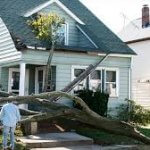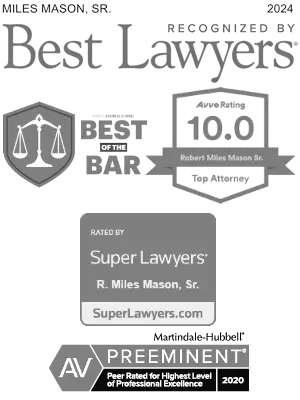How to Shop for Home Insurance
Whether buying a new home or shopping among home insurance policies for your current home, getting the right homeowners insurance policy can feel like another emotional burden. You’ll probably have the same policy for many years, so it’s worth taking the time to be a smart consumer and consider your options.
How to read and understand a homeowners insurance policy

How to shop for home insurance: How to read and understand a homeowners insurance policy
A homeowners insurance policy has two basic functions. First of all, it protects your home against damage such as fire, wind, hail, or theft. It’s second function is to protect you from liability if people are injured on your property.
According to insure.com, there are a number of basic types of homeowners policies, but most policies come within two categories. These are typically referred to as HO-2 and HO-3 policies. The most basic policy is the HO-2, which insures against only specifically named perils. Generally, this type of policy will insure against theft, vandalism, wind, fire, lightning, and weight of ice or snow. There is some coverage for personal property, but the coverage is usually very limited.
The HO-3 policy is the most common and offers more coverage. Unlike the HO-2, which insures against only specific named perils, the HO-3 covers all perils unless they are specifically excluded. The most common exclusions are earthquakes, floods, mudslides, nuclear accidents, and acts of terrorism or war.
The most important page of the policy for you to read and understand is the declaration page. This is usually the first page of the policy and lists information such as your name and address and the address of the insured property, the policy number, the time period during which you have coverage, and the name of your mortgage company.
After that basic information, the declaration page lists the types of coverage you have along with the dollar amount limitation on coverage. It will also list the amount of your deductible.
The declaration page then includes information about how the insurance company rates your home. Your rate will depend upon factors such as the size of the home, the building materials used, and even the distance to the closest fire hydrant and fire station. These factors are what the insurance company uses to set the premium, so it’s important to make sure that this information is right.
Finally, the declaration page will indicate the amount of your premium, including whether you have received any discounts. Since the information on the declaration page is the information used to set your premium, it’s very important to go through it and make sure the information is correct. The rating information is particularly important, but might be written in such a way that it’s difficult or impossible to understand. It pays to talk to the insurance company or agent to make sure that you understand all of this information and that it is correct.
After you finish reviewing the declaration page, insure.com recommends that you review the rest of the policy. Much of the language is standard to all of the company’s policies, but you will want to make sure you are buying the coverage that is right for your needs. Generally, the policy is divided into two sections, one for each type of coverage. The first is the section details the coverage you have for any losses you might incur.
The section of the policy covers liability coverage: The coverage that protects you if someone sues you or threatens to sue you after being injured on your property.
What is covered by a homeowners insurance?
Let’s look at the first section of the policy covering you in the event of a loss. This section is broken down into two parts: One covers damage to the house itself, and the other covers personal property. For damage to the house itself, according to insure.com, the market value of the house is not a major consideration. What you’re worried about is the cost to rebuild the home. The value of the land is not an important factor, since it will be there even after a fire or other disaster. What you do need to consider is construction costs in your area. In most cases, these can be estimated quite well by multiplying the square footage of the house by the local per foot building costs. Your insurance agent will be able to give you guidance as to these costs in your area. You can also get some idea of these costs with the online calculator at HomeAdvisor.com.
The Wall Street Journal goes a step further and recommends walking through your home with a contractor to point out any special features that might increase your construction costs. And if you upgrade your home over the years, you’ll want to make sure you include the costs of these improvements.
The Insurance Information Institute gives the reminder that most policies also cover damage to other structures on your property, such as a garage, tool shed, or gazebo. However, this is not always the case, so you will want to check your specific policy. In general, coverage for these additional structures is about 10% of the insurance on the house itself.
You also have coverage for your personal property. In most cases, insurance companies employ a rule of thumb that your personal property coverage is about 50-70% of the structure coverage. Insure.com recommends that you make a home inventory list to make sure that this amount of coverage is adequate. The process of conducting the inventory might sound daunting, but the Insurance Information Institute has some helpful guidelines on their website. For some types of property, there might be specific limits. For example, there is often a limit on coverage for items such as jewelry, art, coin collections, or guns. If the value of these items is more than the limit, then you should consider adding a “rider” to cover the excess amount.
The policy may also cover property located away from your home. And according to the Insurance Information Institute, many policies provide additional coverage for things such as unauthorized use of credit cards.
In this section of the policy, insure.com recommends that you take a close look at whether you are covered for “replacement cost” or “actual cash value.” You’ll generally be able to choose which option you want, and it will make a difference both in the amount of the premium and in how much you’ll be paid. The less expensive option is actual cash value, which takes into account depreciation in determining how much the insurance will pay. For example, insure.com gives the example of a 15-year-old TV. Even though that set is functioning for you, its cash value is very low, and this is the most that the insurance will pay.
You would need to pay a higher premium for replacement cost coverage, but this would pay you to buy a new TV to replace the 15-year-old set.
Finally, the first section of the policy will explain how much coverage you have for “loss of use” of the property. If your home is damaged or destroyed, then you’ll need to find alternative housing such as a hotel or apartment while repairs are being made. The policy will explain the amount of this coverage, but according to insure.com, it’s generally about 10% of the rebuilding costs. According to financial expert Dave Ramsey, you should make sure that your policy specifically covers additional living expense. If you’re living temporarily in a hotel, you’ll probably be eating out more often than when you have your own kitchen. Make sure that the insurance covers these additional expenses.
The second main section of your policy explains your personal liability coverage. This part of the policy protects you against lawsuits for injuries to other people. If someone sues you or threatens to sue you for injuries caused by things such as dog bites, falling down stairs, or slipping on ice, then the insurance company will cover the medical bills and other damages, as well as your legal fees. The basic coverage is usually $100,000, although as explained below, you may want to consider greater coverage.
How much insurance should you have on your home?

How to shop for home insurance: How much insurance should you have on your home?
When deciding how much insurance you need, remember that there are two separate issues to consider. You need to look at how much insurance you need for the house and personal property. When thinking about the house itself, remember that you need to consider the construction costs, and remember to review this amount periodically if you make improvements to the property or if costs increase in your area. According to financial expert Dave Ramsey, the biggest mistake you can make is not having enough coverage.
Ramsey points out that improvements to your house can increase the costs, and points to a commonly forgotten example of a remodeled kitchen. He also points out that building codes change, and this can mean that the new construction is more expensive than it was originally.
According to BankRate.com, when considering the amount of coverage, you need to ask yourself how much you will need to rebuild your current home in its current location with comparable construction materials.
When it comes to personal property, Dave Ramsey asks the sobering question of how much it would cost you to get back on your feet if you lost everything. He also stresses the importance of conducting an inventory, since most people undervalue their property.
Ramsey also offers advice on the amount of liability coverage you should have. He encourages you to buy as much as possible, since he calls it the greatest buy in the insurance world. Most policies start at $100,000, but he encourages increasing this to $300,000 or $500,000.
What is the standard homeowners insurance deductible?
A deductible is the amount of money that you are responsible for paying before your insurance comes into play. Most commonly, this is a specific dollar amount, but according to the Insurance Information Institute, it is sometimes a percentage.
It’s tempting to go with a low deductible to make sure you get your money’s worth out of your new policy, but this can be false economy. This is because people with high deductibles are less likely to make a claim, and therefore less risk for the insurance company.
According to the Chicago Tribune, one good way to lower your premium is to pick a deductible of at least $1,000. And as Kiplinger points out, one advantage of having a high deductible is that you never need to file small claims. Whenever you file a claim, there’s always the possibility of being dropped by the insurance company. If you bypass the insurance company with a higher deductible, you reduce the chances of this happening.
Dave Ramsey advocates having a fully funded emergency fund stashed away. With that in mind, he recommends a high deductible. He cites an example of raising the deductible from $250 to $1,000, and then looking at the difference in premium. If the savings in premium is only $30 per year, then it would take 25 years without a claim to break even, and raising the deductible might be false economy. But if the difference in premium is $250 per year, then you only have to go three years to break even. Ramsey asks you to look at the additional risk, and then decide whether there are enough savings to justify the risk.
And speaking of deductibles, you’ll want to read your policy carefully to determine which deductible applies to different parts of the policy. According to Forbes, many policies will have different deductibles for different kinds of coverage.
How much should I pay for home insurance? What is the average cost of homeowners insurance?
According to The Motley Fool website, the three most important factors in insurance costs are the same as for real estate: Location, location, and location. According to that website, the most expensive state is Florida, with an average annual cost of over $2,000. Idaho, on the other hand, brings up the rear with an average cost of only $538. But within each state, there can be a wide range, and the site offers the reminder that you need to shop around.
One starting point to give you some idea of the approximate cost in your state is the online calculator at insurance.com. This site won’t give the definitive price, since so many factors come into play. But it will give you an idea of what ballpark you can expect to pay.
Which insurance company is best for homeowners? Best and worst homeowners insurance companies.
Financial expert Clark Howard names names when it comes to both the best and the worst insurance companies. The top five are Amica, USAA, Erie, MetLife, and Auto-Owners. On the other end of the scale, the five worst are State Farm, Allstate, American Family, State Auto, and Auto Club Group. Howard gets his data from Consumer Reports, which ranked companies according to factors such as ease of reaching the agent, and promptness and satisfaction with the claim process.
Howard warns that the “best” company is not necessarily the one with the lowest premium. Instead, the claims process is where both the good and bad insurers show their true colors.
Consumer Reports also offers a buyer’s guide which contains valuable information in selecting a good insurance company.
How to save on homeowners insurance tips: Home insurance discounts to ask for

How to shop for home insurance: Saving on homeowners insurance tips + discounts.
The Insurance Information Institute offers a number of tips on how to save money on homeowners insurance. Their first advice might be obvious, but it bears repeating: You need to shop around. US News & World Report recommends getting quotes from at least three insurance companies before settling on a policy. One good resource as you begin the buying process is your state insurance department. You can find the phone number and website at the National Association of Insurance Commissioners website. That association also has an excellent guide to insurance available on its website. Your state’s website might contain information about rates charged by different insurance companies, and will frequently provide other useful information. And the federal government has a wealth of consumer insurance information at the USA.gov website.
One tip offered by the Insurance Information Institute is that you can often save money by having your home and auto policies with the same insurance company. For liability coverage, this can typically save 5-15%. And staying with the same insurance company for many years can often result in a discount. So resist the temptation to switch companies just because of a small saving.
It’s also worth talking to your insurance agent about steps you can take to make your home more disaster resistant. For example, many companies will offer discounts for adding items such as storm shutters. Similarly, a home security system might result in a discount.
Senior citizens might be entitled to a discount, so it’s worth asking whether this or any other special discounts apply. A good credit record can also reduce your premiums, since insurers have found that those with good credit are less likely to submit a claim.
Financial expert Clark Howard also offers a similar list of tips, but warns against one thing in particular: He urges you to resist the temptation to simply reduce your coverage in order to save on premiums. He points out that insurance is there to protect you from catastrophic losses, and you need to have enough insurance to cover major losses.
Architectural Digest also has a useful list of tips and questions you should ask when buying insurance. One they point out is whether you will need additional coverage if you use part of your home for business, which might include renting your home through AirB&B.
Is homeowners insurance negotiable?
According to Time magazine, you can indeed haggle over insurance rates. The magazine points out that theoretically, it might not be a true negotiation, since the insurance company is supposed to have one rate for all customers who fit the same profile. But different discounts might apply, and by shopping around and pointing out another company’s discount, you might discover that other companies have similar discounts.
In some cases, the discount might not be automatic. For example, if pressed about discounts offered by another company, an agent might remember that you can lower your rate by, for example, purchasing a security system.
US News & World Report also has a convenient list of many of these hidden discounts that might be worth an inquiry.
Should I have an insurance agent to purchase homeowners insurance?
As with many products, it is possible to buy insurance without having to talk to a local agent. But according to MyMove.com, this might be a mistake.
A local agent has a vested interest in making sure that his or her customers are satisfied. Therefore, they can be an excellent resource when you have questions, and the website points out that they might even be able to point out gaps in coverage that you wouldn’t have thought of. And if you’re buying a home, it’s worth talking to a good insurance agent first. In addition to being ready for closing, the agent will be privy to information about trends in crime and other factors that might increase insurance rates in some areas. And if you ever need to file a claim, the website points out that the expertise of a local agent can be invaluable in getting the claim resolved in a fair and timely manner.
By: Miles Mason, Sr. JD, CPA
This article seeks to present general and basic financial concepts and research from various internet resources. It does not seek to present specific legal advice or legal definitions and does not represent any personal opinions of the author.
Why write this? Divorcing clients often ask this question. Also, this was written for personal research.









